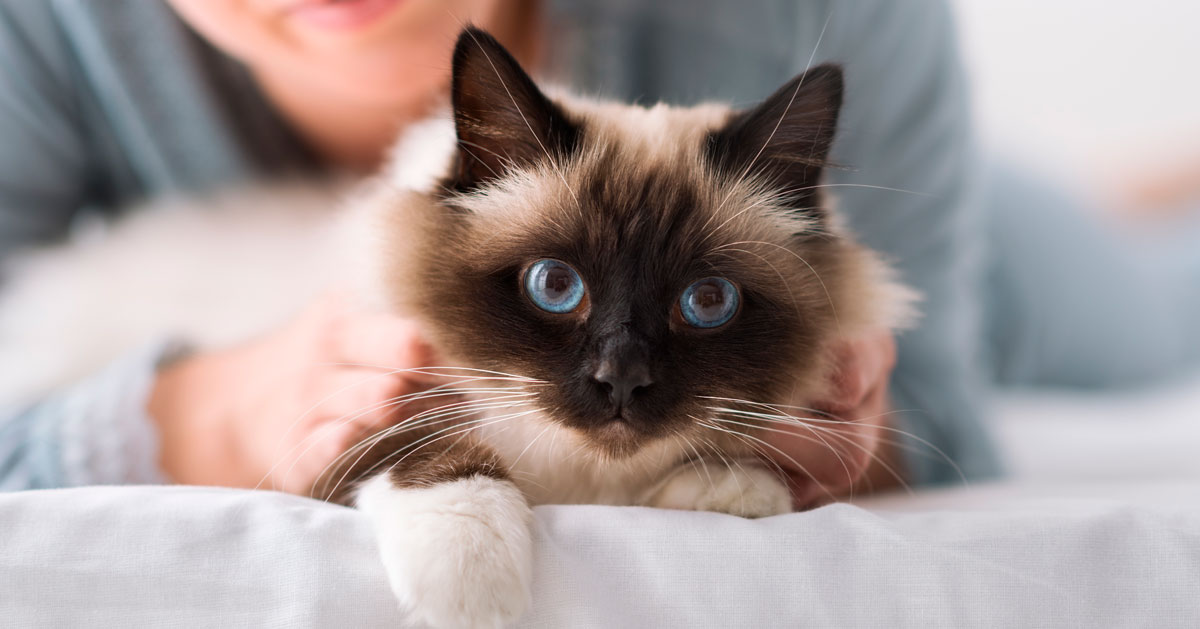If your cat’s fur is not looking as luxurious as normal and they seem to be licking, scratching, and biting themselves a lot; it may be time for a little trip to the vet.
After an examination and a few tests, your vet then tells you that your cat has Malassezia infection. So you can best help your furry friend, it is important that you understand what this fungal infection is and how best to treat it.
Mala-what? What exactly is Malassezia in cats?
Malassezia is a yeast (a kind of fungus) that forms a part of the skin's normal microflora in cats. In healthy cats, it coexists harmoniously in small numbers with the other bacteria and yeasts. However, in felines with underlying health problems, and or cats who suffer from an impaired skin barrier, these resident colonies can grow out of control, causing fungal infections.
Yeast infection symptoms in cats
The symptoms of Malassezia in cats often include red, inflamed, itchy, and even scaly skin. This may be accompanied by feline acne, hair loss, a greasy coat, foul odour, skin discolouration, and in chronic cases, a thickening of the skin. In some cases where the fungal infection affects the claws, you may notice a brownish-black build-up around the nail bed with localised inflammation that may cause the cat to bite and chew on their toes.
Ear infections in cats can also be releted to yeast overgrowths resulting in scaling of the skin on the outer ears, and excessive foul smelling waxy brownish discharge coming from the ear canal. Cat ear yeast infections can be very uncomfortable causing them to scratch. Some individuals may even scratch themselves so hard that they leave the skin behind their ears raw and inflamed.
How are yeast infections diagnosed?
The gold standard for diagnosing Malassezia as the cause of a skin condition is a simple test that involves your veterinarian taking a sample from the affected area using a swab or tape strip and looking at the sample under a microscope. The yeast is readily identifiable. If a small number of Malassezia are seen this is often normal, however, if the organisms are found in large numbers, this means there's an overgrowth or an infection that needs to be treated.
Managing fungal infections in cats: the good news!
Luckily, Malassezia infections in cats are very manageable and respond well to available treatments. First line management generally involves the use of topical products, that are applied directly to the affected skin. Topical treatment can help support your pet’s skin during a skin infection and in many instances, topical treatment is sufficient to control an infection. Typically, these products contain an anti-fungal and anti-bacterial ingredient to control the infection.
Typically an improvement in the symptoms is seen a few days after starting topical therapy and in most cases, signs have completely resolved within 2-3 weeks. Occasionally, some cats require oral antifungals especially for refractory cases. Under these circumstances your cat will need to be seen by a vet.
If your cat gets recurrent yeast infections it is also a good idea to go to your local vet where they may wish to do further investigations to rule out underlying causes that might predispose your cat to Malassezia infections to try and prevent signs reoccurring.
When it comes to Malassesia infections in a cat’s ear, it is important to get them checked by a vet so that they can check that the cat’s eardrum is intact before prescribing a suitable antifungal ear drop to treat the condition.
Underlying causes for your cat’s fungal infection on their skin or ears
Yeast infections are often opportunistic and due to an underlying problem such as a compromised skin barrier or immune system. Your vet will want to rule out diabetes, hormonal imbalances, feline leukaemia, feline immunodeficiency virus, and fleas, amongst others. These conditions often cause an imbalance among the normal bacteria and yeast that live on cats’ skin (the microflora).
Your vet will also ask about your cat’s medical history; such as, whether your cat is on any medication that interferes with the immune system, for example steroids; which are often used in cats to help with skin allergies. Your vet may also ask whether anything has changed recently in the cat’s environment that might be causing allergic skin signs, such as fleas.
This is important because if there is a treatable underlying problem, it has to be fixed or the yeast infection will simply return again and again.
Some pets require long term management of their skin complaint, particularly cats with allergic skin disease where they may need systemic medication such as steroids to control their skin signs. These cats can really benefit from adjunctive topical therapy to keep their skin as healthy as possible and prevent skin infections arising.
Sayonara, Malassezia!
This diagnosis should not frighten you as generally it is not a serious condition by itself and can usually be easily controlled using topical products. Remember to always make sure that any underlying conditions that may predispose your cat to yeast overgrowth has been identified and addressed by a vet to prevent recurrent issues. Relax in the knowledge that you now have the tools to control yeast related ear and skin issues in your cat and can get them back to their former glory in no time.
DOUXOⓇ S3 PYO - antibacterial and antifungal with skin barrier support
DOUXO® S3 Pyo cleanses and disinfects the skin thanks to the antiseptic action of 3% chlorhexidine digluconate while hydrating and maintaining the skin’s ecosystem. It has antibacterial and antifungal efficacy, supports the skin barrier, helps to detangle the fur and leaves the coat soft and shiny.
DOUXO® S3 PYO has proven performance on all 3 skin barriers (mechanical, immune system and microbiological - bacteria on the skin). It also has been shown to be well tolerated on both normal and irritated skin.
As well as other benefits which you can see [here] DOUXO® S3 PYO has a hypoallergenic fragrance which helps to mask the smell of the antiseptic chlorhexidine making everyone's experience a pleasant one. (97% of owners love the texture and smell).
HOW TO USE DOUXO S3 PYO in cats
- Use the shampoo locally to physically remove the yeast and build-up
- Then clean the area with the pads once daily, this is particularly useful if you have a cat who absolutely hates water.



